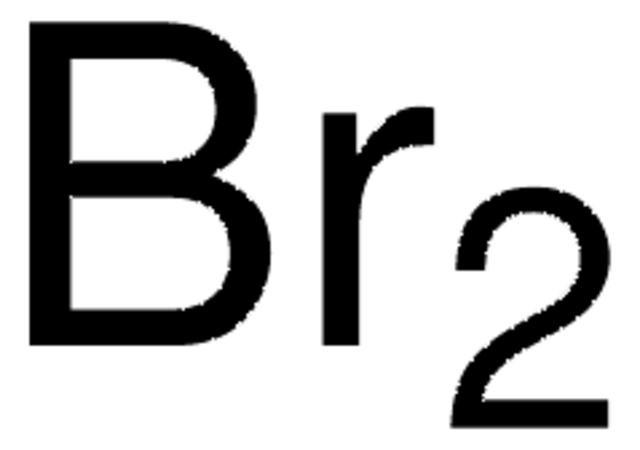03-3360
Bromine
JIS special grade, ≥99.0%
About This Item
Produits recommandés
Qualité
JIS special grade
Densité de vapeur
7.14 (vs air)
Pression de vapeur
175 mmHg ( 20 °C)
671 mmHg ( 55 °C)
Essai
≥99.0%
Forme
liquid
Disponibilité
available only in Japan
Résistivité
7.8E18 μΩ-cm, 20°C
pb
58.8 °C (lit.)
Pf
−7.2 °C (lit.)
Densité
3.119 g/mL at 25 °C (lit.)
Chaîne SMILES
BrBr
InChI
1S/Br2/c1-2
Clé InChI
GDTBXPJZTBHREO-UHFFFAOYSA-N
Vous recherchez des produits similaires ? Visite Guide de comparaison des produits
Mention d'avertissement
Danger
Mentions de danger
Classification des risques
Acute Tox. 1 Inhalation - Aquatic Acute 1 - Eye Dam. 1 - Skin Corr. 1A
Code de la classe de stockage
6.1A - Combustible acute toxic Cat. 1 and 2 / very toxic hazardous materials
Classe de danger pour l'eau (WGK)
WGK 2
Point d'éclair (°F)
Not applicable
Point d'éclair (°C)
Not applicable
Équipement de protection individuelle
Faceshields, Gloves, Goggles
Faites votre choix parmi les versions les plus récentes :
Déjà en possession de ce produit ?
Retrouvez la documentation relative aux produits que vous avez récemment achetés dans la Bibliothèque de documents.
Notre équipe de scientifiques dispose d'une expérience dans tous les secteurs de la recherche, notamment en sciences de la vie, science des matériaux, synthèse chimique, chromatographie, analyse et dans de nombreux autres domaines..
Contacter notre Service technique







